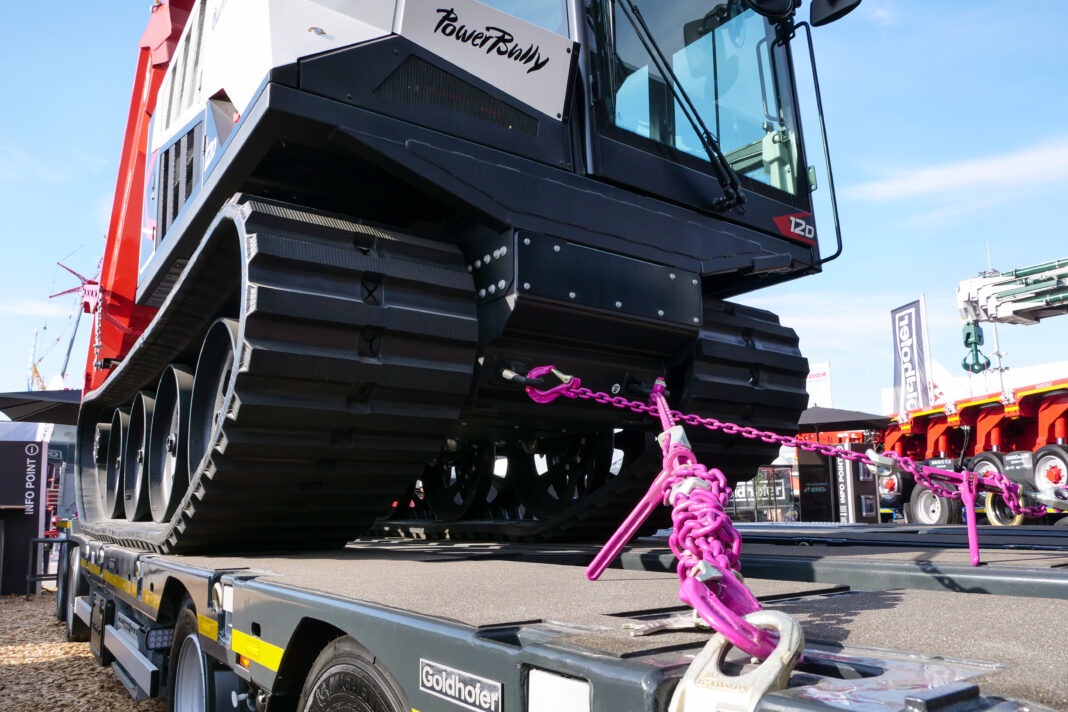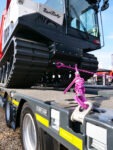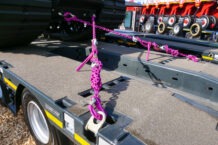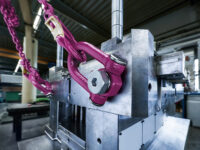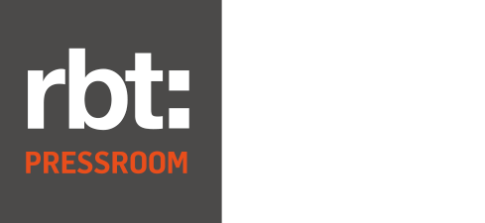During transport, loads must be secured so “that they do not slip, tip over, roll away, fall down, or create avoidable noise, even during an emergency stop or sudden swerve”, and “standard engineering practice must be followed”. This fundamental regulation, set forth in Sec. 22 of the Straßenverkehrsordnung (StVO – Road Traffic Act), applies equally when transporting heavy-duty earth-moving equipment. In practice, however, standard engineering practice as set forth for road transport of such machinery in Technical Directive VDI 2700 and European standard DIN EN 12195-1 is rarely observed in full. Lashing points, in particular, are often neglected, resulting in many lower-quality, non-compliant solutions based on obsolete dimensions. This leads to safety deficits, for which not only manufacturers but also freight forwarders, loaders and drivers will be liable in case of a loss claim.
Plea for the use of high-quality lashing points
In light of these issues, vehicle manufacturers Goldhofer AG and Kässbohrer Geländefahrzeug AG decided, alongside sling and lashing specialist RUD Ketten Rieger & Dietz GmbH u. Co. KG, and construction and logistics company Max Wild GmbH, decided to counteract this tendency to neglect lashing points, and issued a joint plea for the use of high-quality, certified lashing points instead. They promote lashing point solutions that conform to all technical standards and statutory regulations, so that everyone involved is on the safe side, legally and objectively, at all times. This commitment to legally compliant load safety is underscored by a joint project, designed to serve as a model for standard-compliant lashing and presented initially at bauma 2025. The group of four companies is known as the “Southern German alliance.” At the Goldhofer stand, they demonstrated how to secure a PowerBully 12D from Kässbohrer for transport on a TRAILSTAR flatbed truck from Goldhofer – a vehicle and load safety configuration that can serve as a model for transporting earth-moving machinery, and that Max Wild already uses in its construction projects.
Model solution conforms to all standards
The LPW lashing point welding (on the PowerBully 12D) and Optilash-Fix (on the TRAILSTAR flatbed truck) lashing points used on the two vehicles are a reflection of Goldhofer and Kässbohrer Geländefahrzeug’s conviction that responsibility for safe load transport lies primarily with the vehicle manufacturer. The lashing points were carefully calculated during the development phase in consideration of all worst-case scenarios and coordinated to all relevant vehicle parameters. They meet both the requirements of the StVO, VDI 2700 and DIN EN 12195-1 as well as the requirements of international standards ISO 15818:2017 and DIN EN 12640:2020-05 regarding placement, material, minimum lashing capacity, quality testing, and lashing point labelling. With this achievement, the two manufacturers are demonstrating their commitment to high-quality lashing points from lashing point specialist RUD. Users like Max Wild value the level of quality and responsibility they bring to the task.
Partners plan to continue their joint involvement
To expand their alliance for standard-compliant load safety, members of the “Southern German alliance” plan to continue working for better safety when transporting earth-moving equipment. The bauma 2025 will not be the last time the model solution is presented. More activities are planned – always with the goal of advancing better awareness for the importance of appropriate lashing points and lashing solutions. “If our example sets a precedent, we have already achieved a lot”, says Felix Maier, Key Account Manager at RUD, as he summarises the hopes and convictions of the four alliance members.
A full project report is available at the following link and approved for publication: Alliance for standard-compliant load securing – rbt:PRESSROOM


